Approximately 80% of businesses will utilize chatbots, with AI handling a staggering 85% of customer interactions.
Over 1.5 billion people are actively using chatbots worldwide, and this number is expected to keep rising, with chatbots potentially becoming the primary customer service channel for a significant portion of businesses by 2027.
The above statistics clearly say that in the current dynamic business environment, customer interactions are evolving rapidly with the emergence of Conversational AI and Chatbots. These innovations are transforming how businesses interact with customers, providing tailored, effective, and 24/7 support.
Distinguishing between conversational AI and chatbots is essential for companies aiming to improve customer experiences, streamline operations, and remain competitive in a digital era. Being a website development company, we had a discussion on this topic which also included our AI consulting services team where we then decided to explore these technologies to understand their influence on contemporary customer interactions and to showcase how they’re reshaping business-to-customer connections.
What is a Conversational AI Chatbot?
A conversational AI chatbot is designed to simulate human-like conversations with users. These chatbots are powered by artificial intelligence (AI) algorithms, enabling them to understand natural language inputs from users and generate appropriate responses. They can engage in text-based conversations through messaging platforms, websites, mobile apps, or other interfaces.
Conversational AI chatbots perform various tasks, such as answering frequently asked questions, providing customer support, assisting with product recommendations, scheduling appointments, and even holding casual conversations. They typically use natural language processing (NLP), machine learning, and sometimes deep learning to understand user queries and generate relevant and contextually appropriate responses.
Also Read
What is a Chatbot?
Chatbots are software applications crafted to mimic human-like conversations via text. They utilize natural language processing to comprehend incoming queries and formulate appropriate responses. Traditional chatbots operate on rules, meaning they’re programmed to address a specific set of questions, often FAQs, setting them apart from conversational AI.
Rule-Based Chatbots
AI Customer Service Chatbots
Alternatively referred to as decision-tree, menu-based, script-based, button-based, or basic chatbots, represent the most basic form of chatbot technology.
They operate on predefined rules, engaging users through predetermined pathways. Conversations are designed like decision-tree workflows, allowing users to select responses based on their needs.
These chatbots resemble automated phone menus, where users navigate a series of choices to find the desired information. Such technology proves effective for addressing FAQs and resolving straightforward customer queries.
Also known as contextual chatbots or virtual agents, these bots utilize machine learning, natural language processing, or a combination of both to comprehend user intent and generate responses. Continuously learning from customer interactions, they improve over time, delivering increasingly helpful responses.
Both varieties of chatbots serve as a friendly self-service intermediary between businesses and their customers.
Use Cases for Chatbots and Conversational AI Chatbots
The essence of chatbots and conversational AI lies in elevating the customer service journey. While chatbots operate with pre-programmed responses governed by set rules, conversational AI presents a more sophisticated approach. It promotes natural, personalized interactions, resulting in enhanced customer experiences and cost savings. Let’s explore real-world instances where both technologies excel in customer service.
Use Cases of Chatbots
Ordering Food:
Nowadays, you might have found yourself engaging with a chatbot as you explore a restaurant’s website or app. These chatbots can address your inquiries about menu items, process your order, and accommodate special requests such as ingredient customization.

Domino’s leads in chatbot food ordering, integrated with Facebook Messenger, Twitter, and their website. Users interact via text, with NLP understanding orders or keywords like “recent order.” The chatbot retrieves past orders, guides menu selection, and handles special requests, sending orders directly to Domino’s for processing. It offers a convenient, personalized experience, reducing errors.
Travel Assistant:
Numerous airlines and travel booking websites provide chatbot assistance. When browsing flight options, you can engage with a chatbot to search for flights, compare prices, and make your booking all within the conversation.
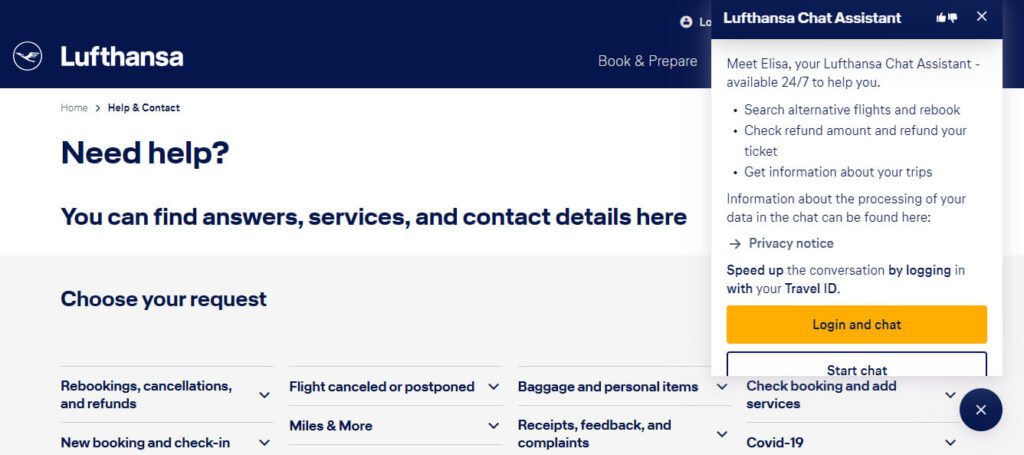
Lufthansa’s chatbot Elisa provides continuous traveler support, addressing flight queries, assisting with rebooking and seamlessly connecting users with human representatives for complex issues.
Bank Inquiry:
You could engage with a chatbot when accessing your bank’s mobile app and inquiring about your account balance or recent transactions. These bots efficiently handle basic banking inquiries, resolve straightforward issues, and seamlessly escalate to a human agent when necessary.
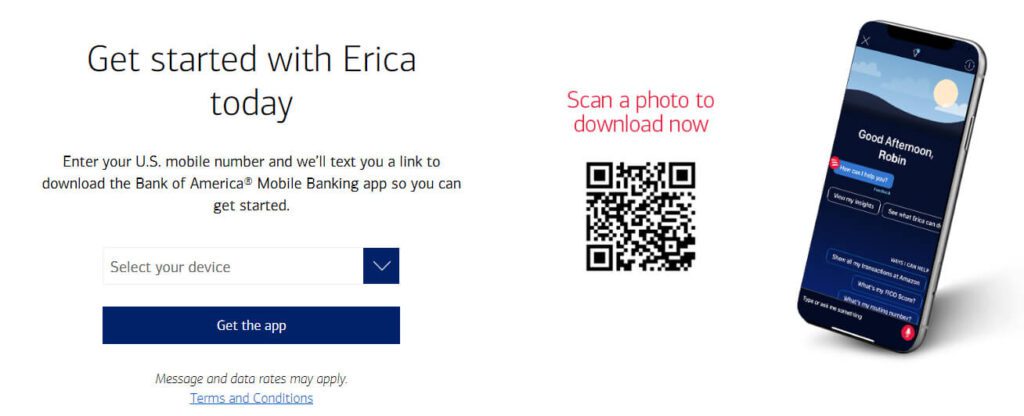
In Bank of America’s mobile app, Erica, the chatbot, assists users in checking balances, transferring money, and answering basic banking inquiries.
Entertainment Recommendation:
Streaming services or social media platforms often employ chatbots to suggest movies, shows, or music tailored to your preferences. These bots leverage past choices and interactions to deliver personalized recommendations.
Help Desk Support:
When seeking technical assistance on a company website’s help desk, your initial interaction may be with a chatbot. These bots adeptly address FAQs, troubleshoot common issues, and gather pertinent information before potentially connecting you with a human representative.
Use Cases for Conversational AI
Smart Speaker Assistant:
Utilizing smart speakers such as Google Home or Amazon Echo involves interacting with conversational AI. You can ask questions or give commands through natural language, receiving appropriate responses.
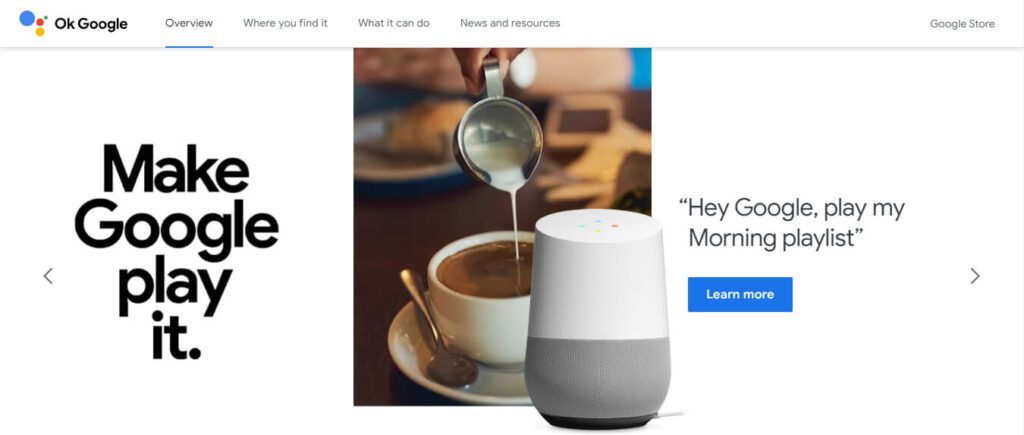
With Google Assistant, you can inquire using natural language, like “What’s the weather today?” or “Set a timer for 30 minutes,” and receive appropriate responses.
Messaging App Support:
Many companies offer customer service through messaging apps like Facebook Messenger or WhatsApp. Initially, interactions may involve a chatbot addressing basic inquiries about products, and orders, or resolving common issues.
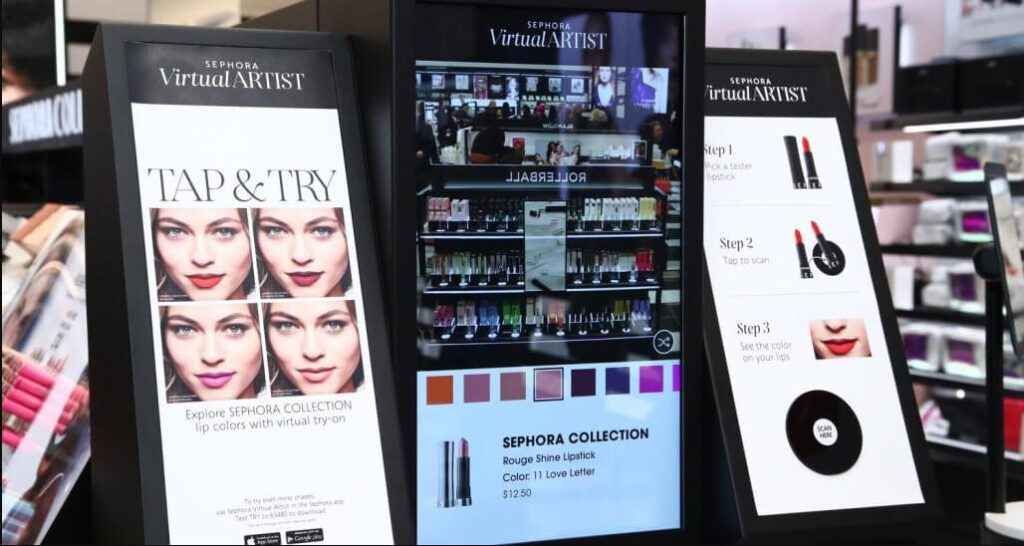
Sephora’s virtual assistants enable chatting with beauty experts anytime to discover ideal products, reserve them for in-store pickup, and check availability via preferred messaging apps. Enjoy seamless makeup and expert guidance instantly.
Virtual Assistant on the Phone:
Contacting a company’s customer service line may involve encountering an Interactive Voice Response (IVR) system powered by conversational AI. It understands spoken responses to menu options, directing calls, or addressing simple queries without human intervention.

When dialing Bank of America’s customer service, you may encounter an IVR system driven by conversational AI. It comprehends spoken responses to menus, directs calls appropriately, and even addresses basic account inquiries.
Also Read
The Future of Chatbot and Conversational AI
Chatbots excel at routine tasks, while conversational AI shines with complex inquiries and personalized interactions. Picture a seamless journey where chatbots handle basic needs before seamlessly transitioning to conversational AI for deeper discussions or nuanced requests.
To claim that chatbots and conversational AI are distinct concepts would be inaccurate, as they are closely intertwined and share similar objectives. Chatbots automate text and voice-based communication, acting as virtual support agents, while conversational AI powers the development of these human-like customer service assistants. Consequently, many businesses embrace conversational AI to cultivate interactive, human-like customer experiences.
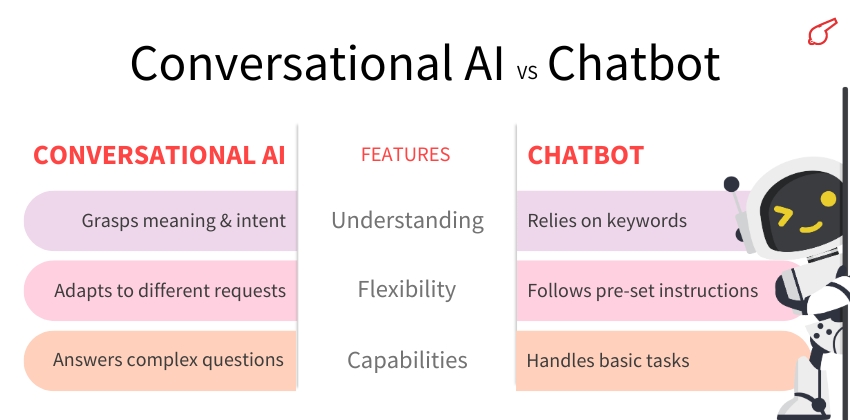
Which One is the Best for Your Business? — Conversational AI or Chatbot
When dealing with complex scenarios, conversational AI proves most effective. While traditional bots may seem suitable for simpler tasks, they often operate on outdated technology with significant limitations. Even setting up an FAQ bot can take time and effort.
Historically, organizations grappled with challenges like prolonged development cycles, intricate coding, and manual training requirements for bot functionality. Yet, contemporary conversational AI solutions from ColorWhistle can eliminate these obstacles, marking a transformative shift in bot creation.
ColorWhistle has utilized Google Vertex AI to create search and conversation Vertex AI Search and Conversation provides developers with the quickest path to create and deploy enterprise-grade generative AI-driven search and chat applications.
We created the generative AI search and chatbot to make our website data easily accessible to our visitors/customers.
Takeaways from our generative AI search and chatbot,
- Help our visitors with relevant information
- Combine our website data with Google search and chatbot
- We have built generative AI as of now with text, but you have the option to enable voice, images, and video
ColorWhistle introduces a groundbreaking zero-setup method in the realm of conversational AI. With ColorWhistle’s tool, setting up your FAQ bot becomes seamless, and ready for operation within seconds. Furthermore, it leverages Generative AI to facilitate smooth, intelligent conversations, eliminating the need for training.
Let’s start on a journey of exploration together and uncover the immense possibilities that await your brand with our tailored development services.
You can contact ColorWhistle by sending us a message or calling us at +1 (919) 234-5140, we’ll get back to you at the earliest. We provide services tailored to your requirements that suit your business. We are also experts at website development services, as well as web designing. You can approach us for any of these services to make a robust online presence for your business.
What’s Next?
Now that you’ve had the chance to explore our blog, it’s time to take the next step and see what opportunities await!

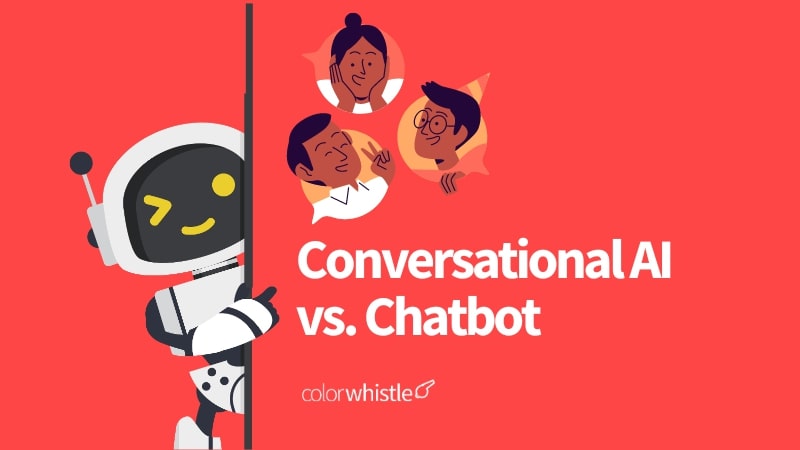
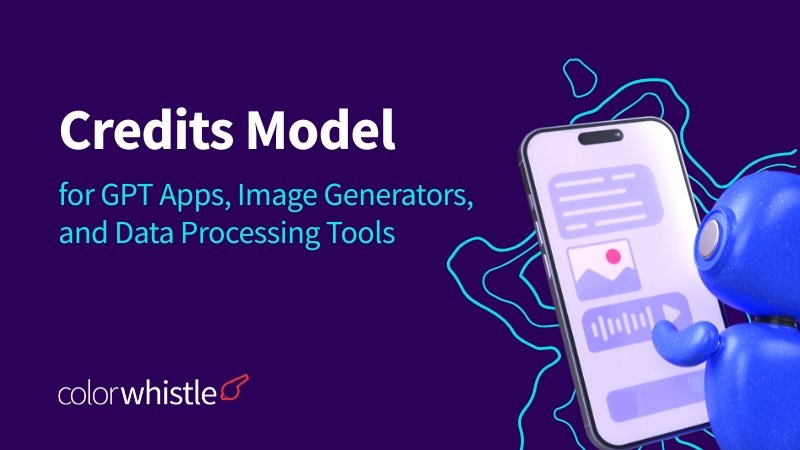
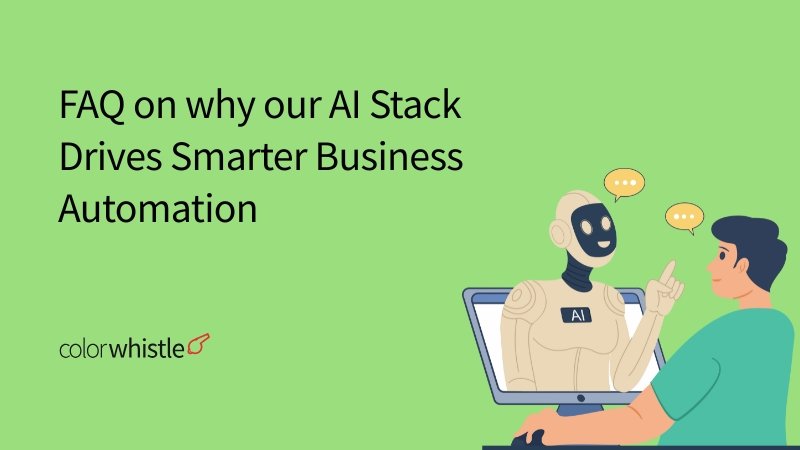
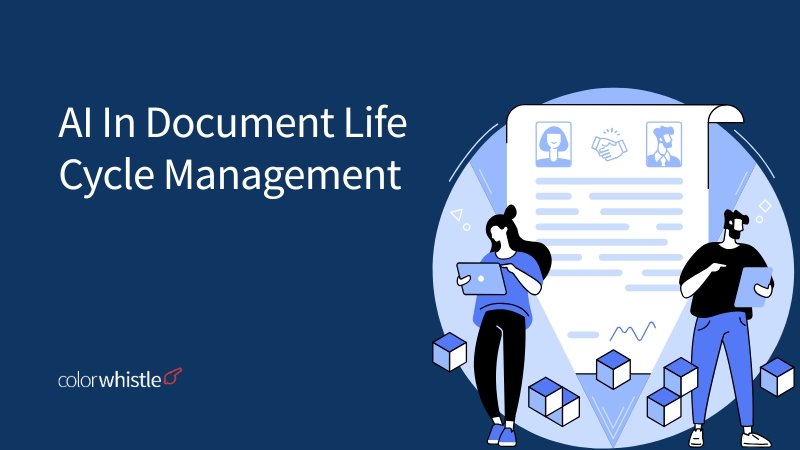

What types of interactions can conversational AI perform that are difficult or impossible for a regular chatbot ?
How does conversational AI handle complex and unstructured conversations compared to chatbots ?